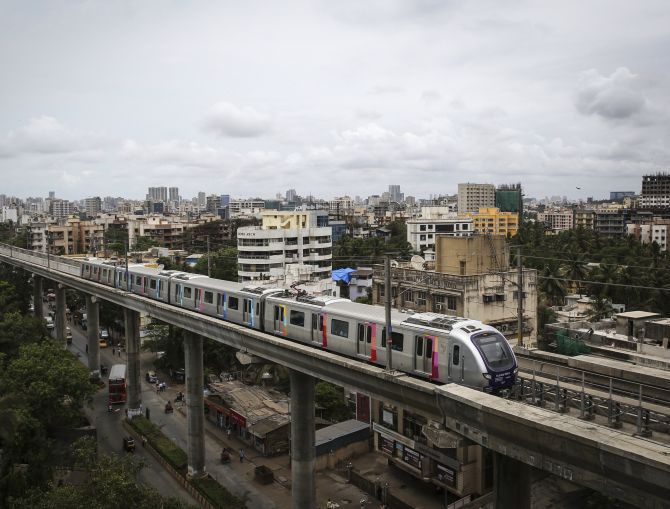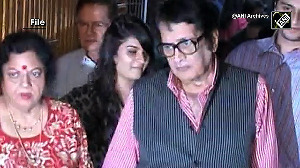Implementation of the reforms through a special purpose vehicle is a way to seek greater accountability, writes M Ramachandran.
 The launch by the prime minister of three major urban programmes - AMRUT (Atal Mission for Rejuvenation and Urban Transformation), Smart Cities Mission and Housing for All - coupled with the earlier initiated programmes of Swachh Bharat Mission and HRIDAY (National Heritage City Development and Augmentation Yojana) definitely is a landmark effort to address the basic problems facing our more than 4,000 cities and towns.
The launch by the prime minister of three major urban programmes - AMRUT (Atal Mission for Rejuvenation and Urban Transformation), Smart Cities Mission and Housing for All - coupled with the earlier initiated programmes of Swachh Bharat Mission and HRIDAY (National Heritage City Development and Augmentation Yojana) definitely is a landmark effort to address the basic problems facing our more than 4,000 cities and towns.
Never before has such a huge allocation, as high as Rs 4 lakh crore for the first three schemes alone, been made for improving basic facilities in our cities. And these programmes cover almost all the key areas which are of concern in our development process.
Another distinguishing feature of the newly launched urban endeavour is that, while the ambitious programme of becoming a smart city is fundamentally based on the concept of the competitive spirit among cities, it also emphasises the importance of the involvement of citizens in deciding what smart features are a priority for a particular city.
As the PM emphasised in his address while launching the programme, it is for cities to come out with what they want to achieve in terms of becoming a smart city, what vision they would like to pursue and how each city would like to see it implemented.
It has been clearly stated that the government is not prescribing any particular model to be adopted by smart cities.
The broad contours of the programme are there in the just-released guidelines, and the option of listing which of those can be done, or will be done, is for the contending cities to envision and explain when the competitive process is on.
Implementation of the programme through a special purpose vehicle is a way to seek greater accountability, and holding the entity responsible for finding the additional resources.
The requirement is that the chief executive officer of the company will be appointed for a fixed term of three years, and the person is to be appointed or removed only with the prior approval of the central ministry - a concept borrowed from the joint-venture Metro Rail corporations, where the managing director is so appointed.
It could be argued that this is a practical way of meeting the demand for ensuring a fixed term and tenure for the commissioner/chief executive officer of the local body.
In the case of AMRUT, for 500 cities which have a population of a lakh and above, a distinguishing feature is that instead of calling for project documents for appraisal and approval to the central ministry, there is trust shown in the capacity of states to do so, by only asking for a state annual action plan to be made available to the central ministry.
One hopes the states will also make larger provisions for urban programmes, especially since they are beneficiaries of greater devolution now.
This programme has emphasised the critical importance of ensuring that every household has access to a tap with assured supply of water and a sewerage connection.
Also, water recycling and reuse has been put in focus though specific incorporation in the water agenda for the city.
The other key feature of this programme is that, learning lessons from the implementation of the earlier Jawarhalal Nehru National Urban Renewal Mission or JNNURM, the implementation of a huge list of uniform reforms for all types of cities and towns has not been sought - thereby accepting that a one-size-fits-all approach is not correct when it comes to the introduction and implementation of reform in our cities.
It is a modest list of 11 reforms this time, with a four-year timeline.
Instead of penalties for non-implementation, incentivisation is proposed this time.
While this may be a different way of approaching the issue, we might as well wait and see the outcome over a four-year period.
It will be a positive step if the Centre asks each participating local body to go public at the end of each year, explaining what has been done, what is in the pipeline and what is the proposed process for completing the reform.
It will also be necessary that independent assessments of the actual status of reform implementation be carried out, so that we are not left with the fait accompli of reforms getting reported mechanically as they are completed.
Also, right at this stage, states and cities should be told clearly as to what are the ingredients of each reform measure which needs to be completed and in what manner.
The Pradhan Mantri Awas Yojana has listed the different possible options of execution in the form of four verticals, thereby trying to cover the key possibilities of moving towards achieving this huge challenge and target.
Various government entities have been asked to make sure that slums on their land should be taken up for in situ redevelopment.
If someone responsible can make it a point to ensure that the Delhi Development Authority - which itself has more than 400 slum clusters in the national capital - takes up and completes this task sincerely, that will send a good message about the seriousness of the matter.
The question which remains is that since all aspects of the implementation of these programmes are basically entrusted to committees of civil servants only, from where, in formal and effective terms, will the much-required complementing, supporting, sometimes effectively alerting contribution of the elected systems come?
Why not a provision for public inputs and feedback at each city level?
The writer was secretary for urban development.










 © 2025
© 2025